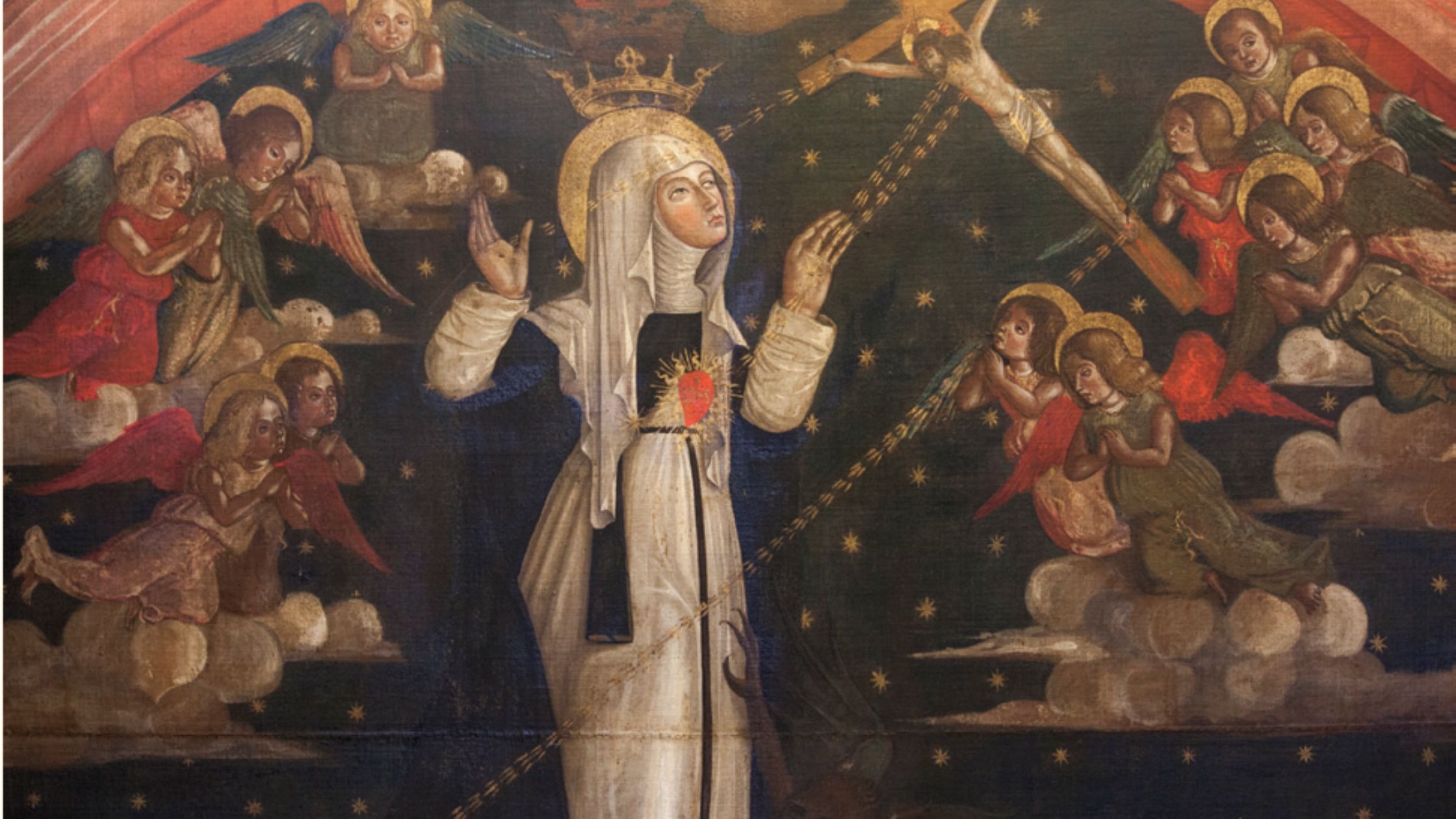Lived: 1347 – 1380 – Country: Italy – Feast Day: 29th April
Catherine was born in Siena, Italy, in a Catholic family of cloth dyers. She was a wilful teenager and once cut off her beautiful long hair in protest at her mother trying to make her attract a husband. She was similarly averse to life as a cloistered nun. Thus, she opted for an active and prayerful life in the lay branch or third order of the Dominicans. She promised God that she would not marry, but continued to live at home. She donned the Dominican habit, spent much time in prayer and solitude, and cared for the sick and poor. Soon she attracted a group of followers. She started to travel with them through parts of Italy, and called for the reform of the clergy. She also called people to change their lives by abandoning themselves to the love of God.
Catherine became very influential because of her deep knowledge of philosophy and theology, combined with her total dedication to God. She exchanged letters with influential friends, and even with Pope Gregory XI. She begged for peace and for the reform of the clergy.
At the time, the popes lived in Avignon, France. In 1376, Catherine was sent to Avignon as ambassador of the Republic of Florence. Her attempts to establish a peace treaty with the Papal States were unsuccessful, but she also used the opportunity to try to convince the pope to return to Rome. A year later the pope indeed changed his residence to Rome. He sent Catherine to Florence to bring about peace, which she eventually was able to do. During all her diplomatic activity she spent much time in prayer, and she had various mystical experiences. She wrote hundreds of letters, prayers, and her profoundly spiritual book The Dialogue of Divine Providence. She died when she was 33 years old.
Since the time of Catherine, much has changed: most prelates are living in accordance with their vows, and women are more valued. At the same time, much still needs to be improved. However, the question as to why the Church is such a man’s world starts from a wrong perspective. The Church consists of all the baptised faithful, laity and clergy together. Each of them is called to join in ‘running’ the Church, each according to the vocation to which God calls him or her. Every individual is like a brick in the wall of the single church building. Ordination is just one of the vocations, and the clergy amounts to approximately 0.03% of the faithful. Looked at from an organisational point of view, it seems rather strange to concentrate all power for decision-making in this small group. Appointing women in key positions would indeed be a great improvement, but the reflection needs to go deeper. We need to grow in our understanding of the vocation of the lay faithful, which goes beyond just performing a role in a specific position.
Pope Francis was aware of the importance of involving women at the level of decision-making. Just as his predecessor, Gregory XI, listened to Catherine, he wanted to listen to the ‘feminine genius’. At the same time, he warned strongly against every form of clericalism. Clericalism is closely related to careerism and looks at position or importance rather than vocation. Clericalism is wrong for both clergy and laity. The pope said: ‘Women in the Church must be valued, not “clericalised.”’ The challenge for the future is to find new ways to truly include women and lay faithful in decision-making in the Church, with respect for their personal vocations. Will you join in this honest search?
‘When they tell me… “In the Church women must be dicastery heads, for example!” Yes, they can, in certain dicasteries they can; but what you are asking is simple functionalism. That is not rediscovering woman’s role in the Church… This is a great thing, it is a functional thing; but what is essential to the woman’s role is – speaking in theological terms – to acting in a manner which expresses the feminine genius. When we face a problem among men we come to a conclusion, but when we face that same problem with women the outcome will be different. It will follow the same path, but it will be richer, stronger, more intuitive. For this reason women in the Church should have this role…to clarify the feminine genius in so many ways.’
[Pope Francis, Address to the religious of Rome, 16 May 2015]
Continue Reading About the Saints
 This blog is extracted from Online With Saints, which offers a virtual encounter with 100+ saints from all around the world. Women and men, carpenters and scholars, mothers and popes, princes and paupers: their inspiring life stories are linked to real-life modern questions, and together with the saints, answers are found.
This blog is extracted from Online With Saints, which offers a virtual encounter with 100+ saints from all around the world. Women and men, carpenters and scholars, mothers and popes, princes and paupers: their inspiring life stories are linked to real-life modern questions, and together with the saints, answers are found.
